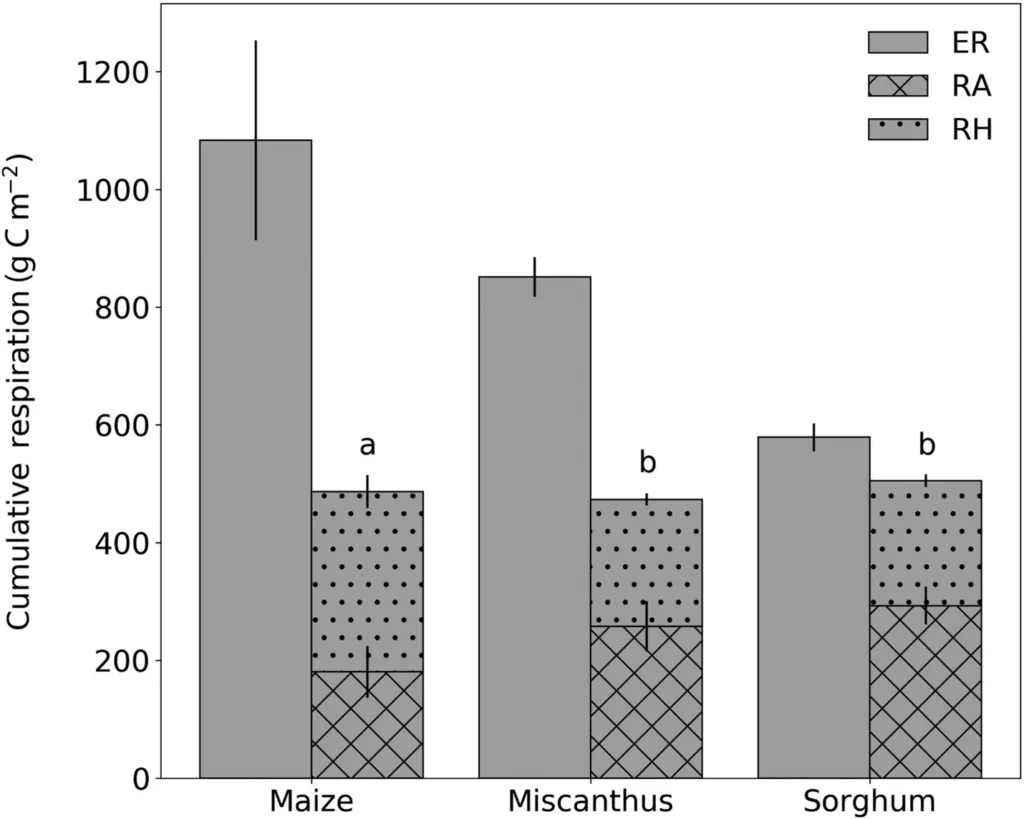Biogeochemical Fluxes for Three Bioenergy Crops
Themes: Sustainability
Keywords: Field Data
Citation
Moore, C.E., von Haden, A.C., Burnham, M.B., Kantola, I.B., Gibson, C.D., Blakely, B.J., Dracup, E.C., Masters, M.D., Yang, W.H., DeLucia, E.H., Bernacchi, C.J., Dec. 22, 2020. “Biogeochemical Fluxes for Three Bioenergy Crops.” University of Illinois Urbana-Champaign. DOI: 10.13012/B2IDB-8157843_V1.
Overview

Perennial crops have been the focus of bioenergy research and development for their sustainability benefits associated with high soil carbon (C) and reduced nitrogen (N) requirements. However, perennial crops mature over several years and their sustainability benefits can be negated through land reversion. A photoperiod‐sensitive energy sorghum (Sorghum bicolor) may provide an annual crop alternative more ecologically sustainable than maize (Zea mays) that can more easily integrate into crop rotations than perennials, such as miscanthus (Miscanthus × giganteus). This study presents an ecosystem‐scale comparison of C, N, water and energy fluxes from energy sorghum, maize and miscanthus during a typical growing season in the Midwest United States. Gross primary productivity (GPP) was highest for maize during the peak growing season at 21.83 g C m−2 day−1, followed by energy sorghum (17.04 g C m−2 day−1) and miscanthus (15.57 g C m−2 day−1). Maize also had the highest peak growing season evapotranspiration at 5.39 mm day−1, with energy sorghum and miscanthus at 3.81 and 3.61 mm day−1, respectively. Energy sorghum was the most efficient water user (WUE), while maize and miscanthus were comparatively similar (3.04, 1.75 and 1.89 g C mm−1 H2O, respectively). Maize albedo was lower than energy sorghum and miscanthus (0.19, 0.26 and 0.24, respectively), but energy sorghum had a Bowen ratio closer to maize than miscanthus (0.12, 0.13 and 0.21, respectively). Nitrous oxide (N2O) flux was higher from maize and energy sorghum (8.86 and 12.04 kg N ha−1, respectively) compared with miscanthus (0.51 kg N ha−1), indicative of their different agronomic management. These results are an important first look at how energy sorghum compares to maize and miscanthus grown in the Midwest United States. This quantitative assessment is a critical component for calibrating biogeochemical and ecological models used to forecast bioenergy crop growth, productivity and sustainability.
Data
- Soil Respiration Data
- N2O Daily Fluxes
- Agronomic measurement and yield metrics
- Flux and meteorological variables